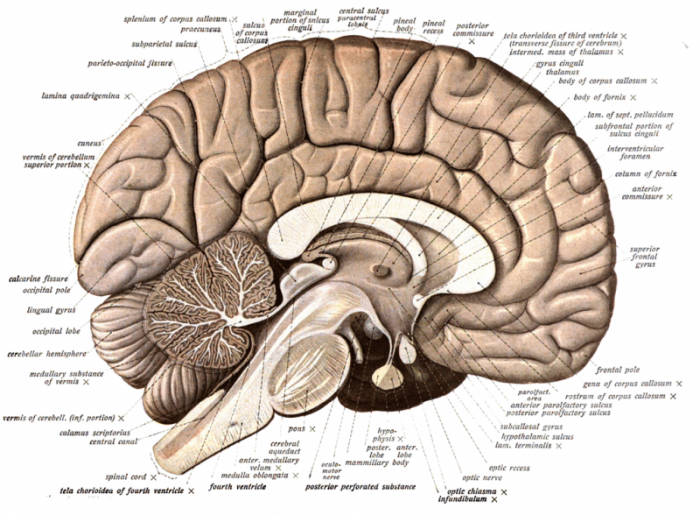
Emergent properties are properties that manifest themselves as the result of various system components working together, not as a property of any individual component.
To put that another way, it is a property that a complex system or collection of system parts has, but which individual parts do not possess.
The term is used within systems theory, science, philosophy, and even creative mediums and it encapsulates the idiom of something being “greater than the sum of its parts”. Since emergent properties are viewable at more macro levels of analysis, only examining individual parts of the system will prevent one from seeing emergent properties. Examples of emergent properties include biochemical systems, the brain, and ant colonies.
Let’s take a closer look at some examples of emergent properties and discuss how the property only manifests itself at the correct level of analysis.
Examples Of Emergent Properties
Ant Colonies
One of the easiest examples of emergent properties to grasp is ant colonies. If one were to continually observe a single ant, the ant would seem to move around with little purpose and accomplish very little. However, when one observes the actions of the colony as a whole, it is clear how the many ants working together are able to accomplish an impressive variety of tasks. Many multiple ants working together can build dams and mounds and transfer large amounts of food from one area to another. The emergent property appears as the result of many ants being organized together.
“Imagine what humans could do, if we all worked together like an ant colony … minus the queen.” — Justin D. Hill
If one ant finds a food source, it secretes substances that act as chemical markers and bring other ants to the same place to break the food source down and return it to the colony. So while an individual ant may only grab a small crumb of food, together the ants form an efficient machine capable of following one another to the food source, disassembling it, and returning it to the colony – a machine/system created to accomplish this task is one example of an emergent property.
The Brain/Human Consciousness

Photo: By Dr. Johannes Sobotta – Atlas and Text-book of Human Anatomy Volume III Vascular System, Lymphatic system, Nervous system and Sense Organs, Public Domain, https://commons.wikimedia.org/w/index.php?curid=29135452
There are many proposed explanations for the origin of consciousness in the philosophy of mind/consciousness. If one were to examine any part of the human brain, they would not find a consciousness center, the chemical interactions of which “cause” consciousness. One of the dominant theories of consciousness is “emergentism,” which postulates that consciousness arises out of the complex interaction of various component parts working together. No individual neuron is responsible for the processing of information or the experiencing of emotions, this is only possible through the linking of millions of neurons together. While there is much that is still unknown about the human brain, most biologists and neuroscientists agree that consciousness is an emergent property and that the many complex interactions that take place between neurons and brain regions give rise to a phenomenon that no individual part possesses.
Chemistry
In chemistry, there are many instances where actions or forces have an effect greater than the sum of their parts when combined together. The complex nature of the interactions between chemical compounds and elements can frequently cause chemical reactions that have greater effects than the effects of their constituent parts. As an example, neutralization reactions often seem to lead to unexpected outcomes. The combination of sodium hydroxide and HCl combined to create water and salt, two fairly safe and non-harmful compounds. This seems like an emergent property when one considers that HCl and sodium hydroxide are strongly acidic and strongly basic compounds, each rather dangerous on their own.
Cities
Many different emergent properties can be found in cities. While it’s possible to analyze the actions of an individual person, the complex ways that people interact with one another and their environment are often emergent properties that require a wider lens to appreciate. Urban developers, city planners, and social scientists frequently research how social activities and certain economic forces congregate around specialized regions of a city. For instance, consider how business districts and shopping centers are centered around different types of activities, but are not the result of any single building in the region.
“Cities aren’t like people; they live on and on, even though their reason for being where they are has gone downriver and out to sea.” — John Updike
The creation of one type of building can make the creation of similar buildings in the area more likely. If one restaurant is created in an area, other restaurants and bars are likely to pop up nearby. While no individual person was responsible for the creation of a restaurant center, it still exists as an emergent property. This is especially likely to happen in regions that don’t have zoning laws prohibiting/limiting the creation of certain types of buildings.
Bird Flocks
Flocks of birds frequently move in an orchestrated, synchronized mass, with hundreds of birds turning this way or that way in a synchronous swarm behavior. While a flock of birds is made out of individual birds, the flock seems to have a life of its own, undulating in ways that seem to have a purpose. No single bird in the flock knows what any other bird is about to do, yet the flock still keeps together, motivated by instinctive drives. The size of the flock can help insulate the flock from predators and prevent individual birds from getting lost. The flock operates on a few simple instinctive rules, like stay a certain distance away from your neighbor, but seems to be meticulously planned out.
“Birds of a feather flock together.” — Proverb
Video Games
Emergent properties can also be found in creative works and media, like video games. Emergent gameplay refers to scenarios or mechanics that appear as a result of other, simpler mechanics working together. One example is games that have procedurally generated levels or areas, or games that have mechanics that adjust in response to player input. Games that have adaptive difficulty, which get harder or easier depending on player performance, display one form of emergent gameplay.











